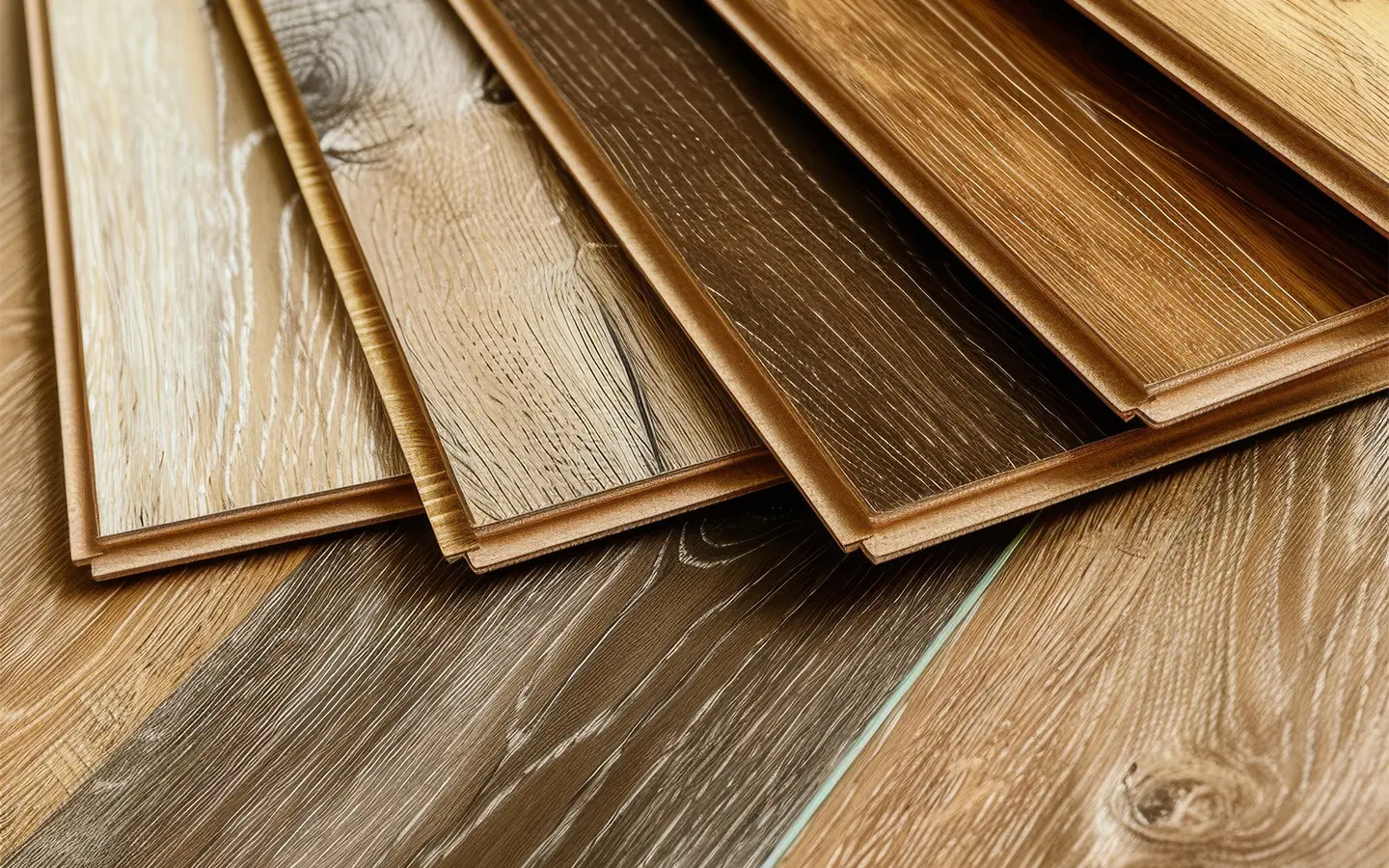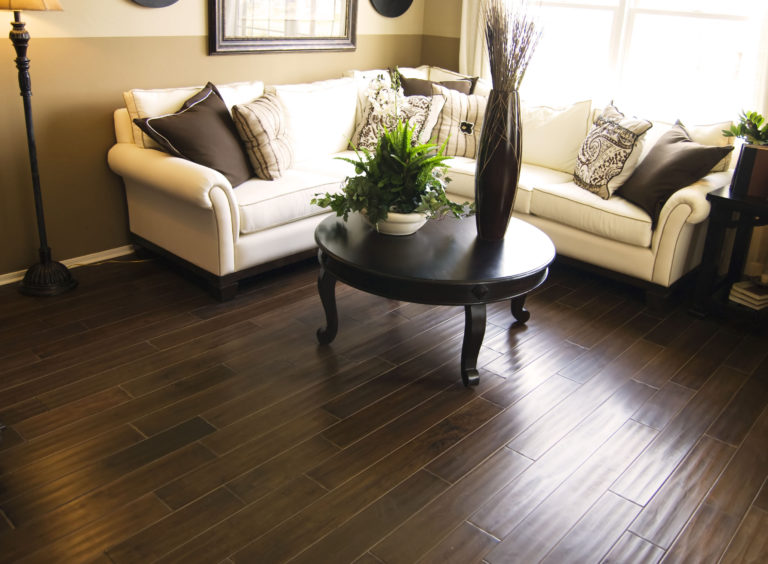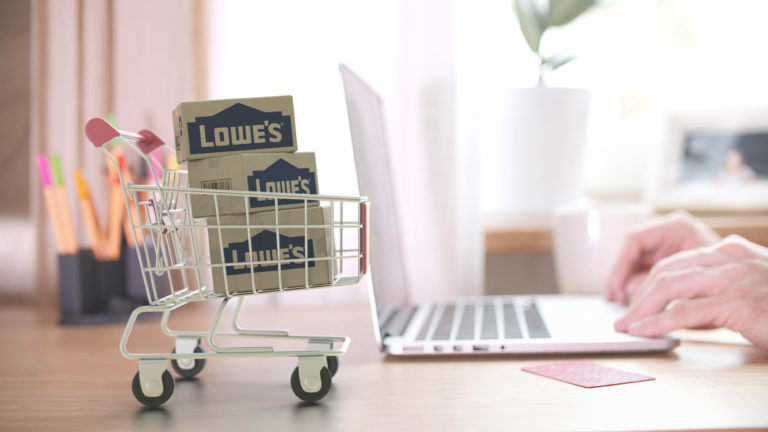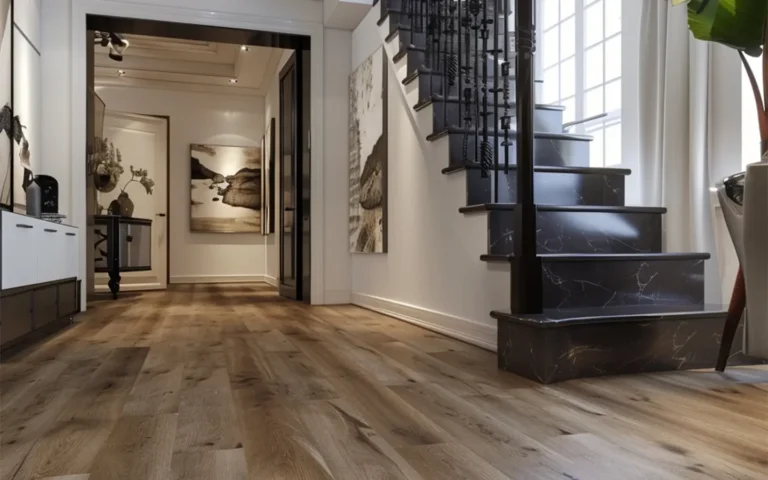If you are planning to install LVP flooring, one of the most important factors to consider is which adhesive to use. The right adhesive choice can make all the difference in ensuring a secure and lasting installation.
In this article, we discuss the various types of adhesives for LVP flooring, factors to consider when choosing the right adhesive, the leading adhesive brands in the market, and how to properly apply the LVP adhesive for a successful flooring installation.
Types of Adhesive for Vinyl Floors
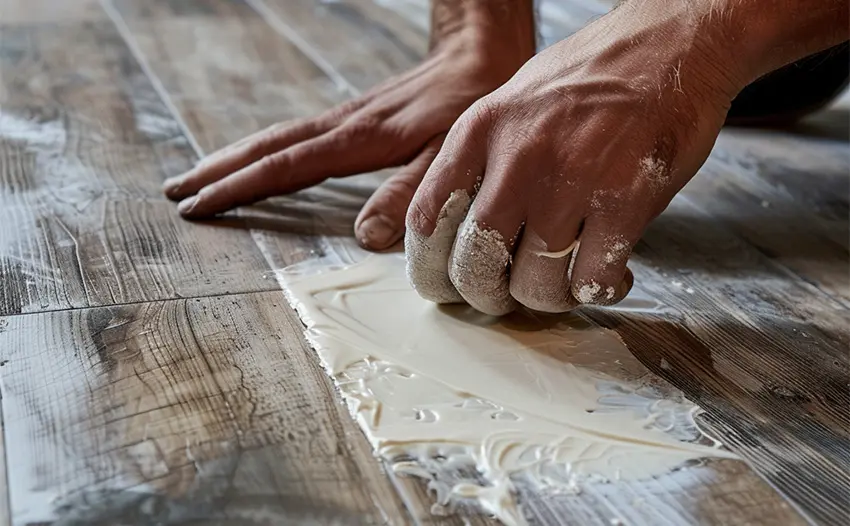
There are several different types of adhesives available on the market, each with its unique properties and applications. Let’s discuss the three popular adhesives suitable for LVP flooring: pressure-sensitive, hard-set, and epoxy-based adhesives.
Pressure-Sensitive Adhesive
Pressure-sensitive adhesive (PSA) is a popular choice for LVP flooring because of its user-friendly nature and its ability to reposition the planks during installation.
These adhesives are designed to provide a strong bond while allowing for adjustments before drying completely. When using a pressure-sensitive adhesive, you’ll need to apply it to the subfloor evenly and then press the LVP planks firmly into place.
Some advantages of using pressure-sensitive adhesives for LVP flooring include:
- Ease of use and installation
- Ability to reposition planks if needed
- Good initial tack and bond strength
- Limited to no mess during installation
However, it is worth noting that pressure-sensitive adhesives may not be as durable as other adhesives and may require more frequent maintenance or replacement in high-traffic areas.
Hard-Set Adhesive
Hard-set adhesives are a more permanent solution for vinyl plank flooring, designed to provide a long-lasting and robust bond between the planks and the subfloor.
These adhesives are typically applied with a trowel and must be used with precision to achieve a strong bond. Once applied, hard-set adhesives cure, creating a solid connection between the flooring and the subfloor.
Benefits of using hard-set adhesives for vinyl plank flooring include:
- Increased durability and longevity
- Greater bond strength
- Resistance to moisture and temperature fluctuations
On the downside, hard-set adhesives usually have less flexibility and a longer curing time, which can delay the completion of the flooring installation project.
Best Brands of 2024
Epoxy-Based Adhesive
Epoxy-based adhesives are a two-component adhesive system consisting of a resin and a hardener.
When mixed, these components create a chemical reaction that forms an incredibly strong bond, making epoxy adhesives an ideal choice for heavy-duty vinyl plank flooring installations.
Epoxy-based adhesives are particularly useful in areas with high levels of moisture or humidity, such as bathrooms, kitchens, and basements.
The benefits of using epoxy-based adhesives for vinyl flooring include:
- Excellent bond strength
- Moisture and humidity resistance
- Resistance to chemicals and stains
However, there are some drawbacks to using epoxy-based adhesives, such as the need for proper mixing, the potentially longer installation process, and increased costs compared to other types of adhesives.
Factors to Consider When Choosing the Best Adhesive for Vinyl Flooring
Now that you have a better understanding of the different types of adhesives for vinyl flooring, let’s explore some key factors to consider when making your selection.
These factors include subfloor preparation, room conditions, and the specific vinyl flooring type you plan to install.
Subfloor Preparation
Proper subfloor preparation is critical for the success of any vinyl flooring installation.
The subfloor must be clean, level, and free of any debris before applying adhesive. In some cases, this may involve sanding or using a self-leveling compound to create a smooth surface.
Some adhesives are better suited for certain types of subfloors. For example, hard-set adhesives are ideal for concrete subfloors, while pressure-sensitive adhesives may be preferred for wood subfloors.
Room Conditions (Temperature and Humidity)
The temperature and humidity levels in the room where you’ll be installing the LVP flooring can have a significant impact on the adhesive’s performance. Read the manufacturer’s recommendations for acceptable temperature and humidity ranges for each adhesive type.
If the space you’re working in tends to be more humid, like a bathroom or basement, epoxy-based adhesives may be the best choice due to their moisture resistance.
Conversely, in a more stable climate, pressure-sensitive or hard-set adhesives may be more suitable.
LVP Flooring Type (Glue-down or Floating)
Lastly, you’ll need to consider the type of LVP flooring you’re installing.
Some luxury vinyl planks are designed with click-lock edges, allowing them to be installed as a floating floor without adhesive, while others may require gluing to the subfloor.
Be sure to follow the manufacturer’s recommendations and select the appropriate adhesive for your specific flooring type.
Take the time to consider factors such as subfloor preparation, room conditions, and LVP flooring type to select the best adhesive for your needs. By doing so, you’ll enjoy a stunning, comfortable, and durable floor for years to come.
Leading Adhesive Brands and Proper Application for LVP Flooring
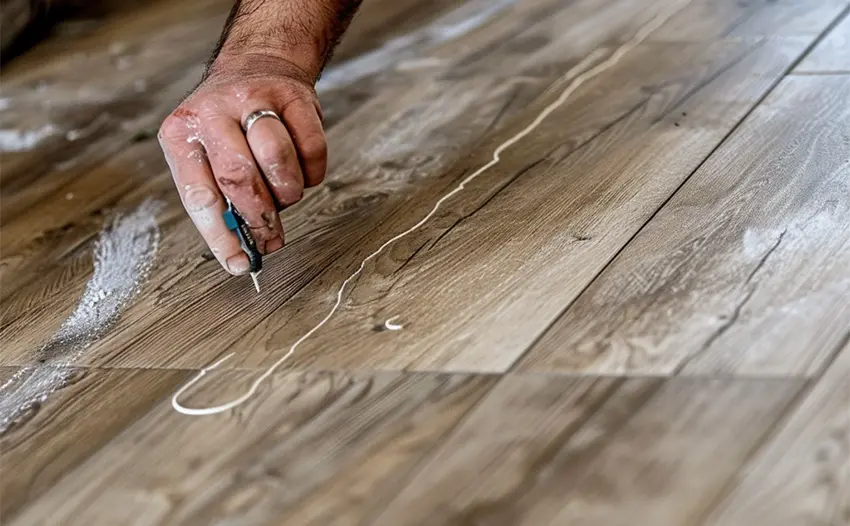
When it comes to installing luxury vinyl plank (LVP) flooring, choosing the right adhesive plays a crucial role in ensuring long-term durability and performance.
Using a high-quality adhesive from a reputable brand guarantees a strong bond between the subfloor and the vinyl, making the installation process smoother and more efficient.
In this section, we will discuss some of the most popular adhesive brands for LVP flooring: Tarkett, Mapei, and Shaw.
Tarkett Adhesives
Tarkett is a well-known flooring brand offering a wide range of adhesive products specifically designed for LVP installations.
Their ProSheet Plus multipurpose adhesive is a popular choice among professionals due to its strong bonding capability and ease of application. This adhesive is formulated to provide an aggressive bond, delivering excellent moisture resistance and reducing the risk of curling or peeling.
ProSheet Plus is suitable for both residential and commercial applications and is compatible with all Tarkett LVP product lines.
Mapei Adhesives
Mapei is another leading adhesive brand with a proven track record in the flooring industry.
Their Ultrabond ECO 350 adhesive is an excellent choice for LVP installations, offering a low-odor formula that is easy to trowel and provides a reliable bond. This adhesive is known for its quick grab and extended open time, allowing installers to adjust vinyl planks during the installation process for optimal positioning.
Additionally, Ultrabond ECO 350 is made using bio-based materials, making it an environmentally friendly option.
Shaw Adhesives
Shaw is a renowned flooring manufacturer with a wide range of adhesive solutions for LVP installations.
Their Shaw 4100 adhesive is specifically designed for use with luxury vinyl planks and tiles, providing a tenacious bond that is resistant to moisture and heavy foot traffic. This adhesive is formulated with Meta-Tec technology, which ensures a robust bond between the subfloor and the vinyl flooring.
The easy-to-spread formula and Shaw’s reputation for high-quality products make this adhesive a popular choice among professional installers.
Proper Application of Adhesive for LVP Flooring
Choosing the right adhesive brand is just the beginning; the proper application of the adhesive is equally important for successful LVP flooring installation.
In this section, we will discuss the necessary tools, equipment, adhesive open time, curing period, and the installation process to ensure a well-executed LVP flooring project.
Tools and Equipment
The right tools and equipment are essential for a successful adhesive application. Here’s a list of items that you will need for your LVP installation project:
- Trowel: Select the appropriate trowel size as recommended by the adhesive manufacturer to ensure the correct adhesive coverage.
- Utility knife: A sharp utility knife will be required to trim and shape your LVP planks accurately.
- Floor roller: After laying down the planks, use a floor roller to ensure there are no air pockets or gaps between the flooring and the adhesive.
Adhesive Open Time and Curing Period
Adhesive open time refers to the period between when the adhesive is applied to the subfloor and when it starts to cure.
During this time, you can position and adjust the LVP planks as necessary. It is crucial to follow the manufacturer’s recommendations on adhesive open time to ensure a strong bond.
The curing period is the time it takes for the adhesive to reach its full strength.
Many manufacturers suggest a 24-hour curing period, during which you should avoid any heavy foot traffic or rearrangement of furniture on the newly installed floor. This will allow the adhesive to bond fully with the LVP flooring and the subfloor.
Installation Process
Before applying the adhesive, it is important to clean and prepare the subfloor. Make sure the surface is free of dirt, debris, and moisture. Next, follow these steps:
- Apply the adhesive to the subfloor using the recommended trowel. Make sure to evenly spread the adhesive across the surface, leaving no buildup or gaps.
- Lay down the LVP planks using the manufacturer’s recommended pattern or layout. Make any necessary cuts or trims to ensure a snug fit between the planks and the walls or other obstructions.
- Use a floor roller to eliminate any air pockets and ensure maximum contact between the adhesive and the LVP flooring.
- Allow the adhesive to cure according to the manufacturer’s guidelines. During the curing period, avoid heavy foot traffic or any movement of furniture on the newly installed floor.
By following the right techniques, using the recommended equipment, and allowing sufficient time for the adhesive to bond and cure, you will ensure that your LVP flooring installation is a successful, long-lasting, and beautiful project.
FAQs
Why is adhesive important for LVP flooring?
The adhesive is important for LVP flooring because it ensures that the planks lay flat and securely in place, preventing gaps and movement that can damage the flooring over time.
What are the different types of adhesive for LVP flooring?
There are two main types of adhesive for LVP flooring: pressure-sensitive and hard-set. Pressure-sensitive adhesive is easier to work with and allows for easier plank repositioning, while the hard-set adhesive dries quickly and creates a rock-solid bond.
Can I install LVP flooring without adhesive?
While some LVP flooring may be designed to be installed without adhesive, it is generally not recommended as it can result in gaps or movement in the planks.
How do I choose an adhesive for my LVP flooring?
To choose an adhesive for your LVP flooring, consider the type of subfloor you have, the type of LVP flooring you plan to install, and the installation method you will be using. Consult with a flooring professional to help you select the best adhesive for your specific situation.
Can I install LVP flooring myself?
While it is possible to install LVP flooring yourself, it is generally recommended to hire a professional to ensure proper installation and avoid mistakes that can be costly to fix.
About The Author

Courtney Daily
February 27, 2024
Courtney is a freelance writer who wears many other hats: kindergarten teacher by day, Broadway diva in the shower. She is a transplant Hoosier who originated in New England. When she isn't writing in her spare time, you will find her reading history books, arguing with her latest knitting project, or being beaten by her kids at most games.
